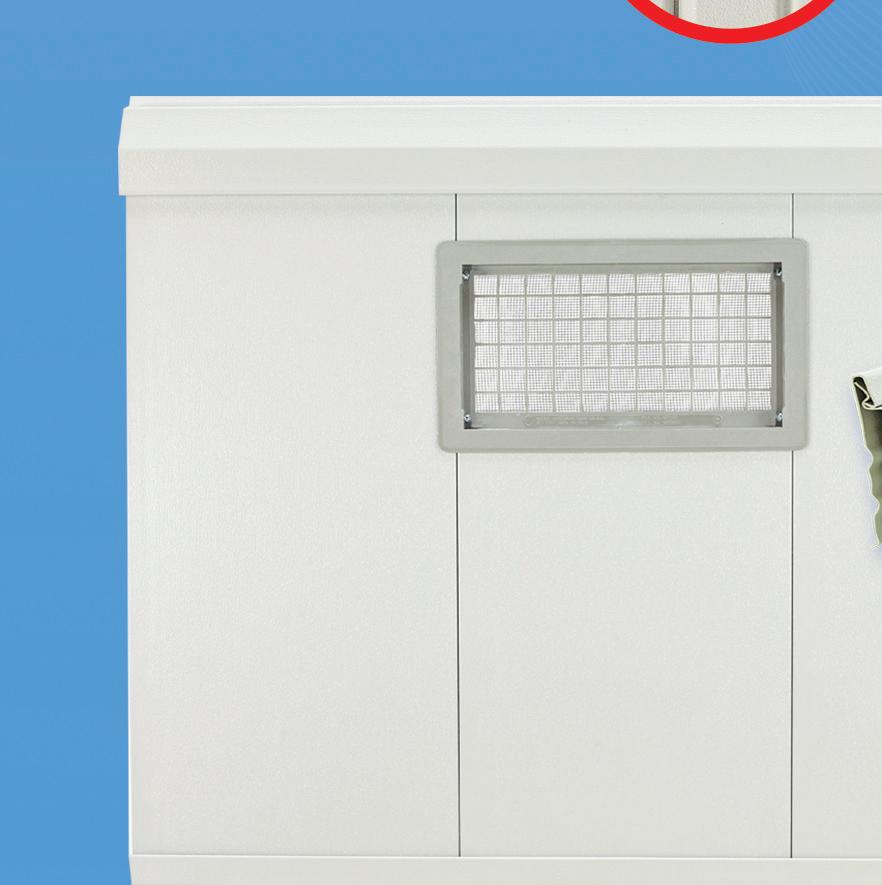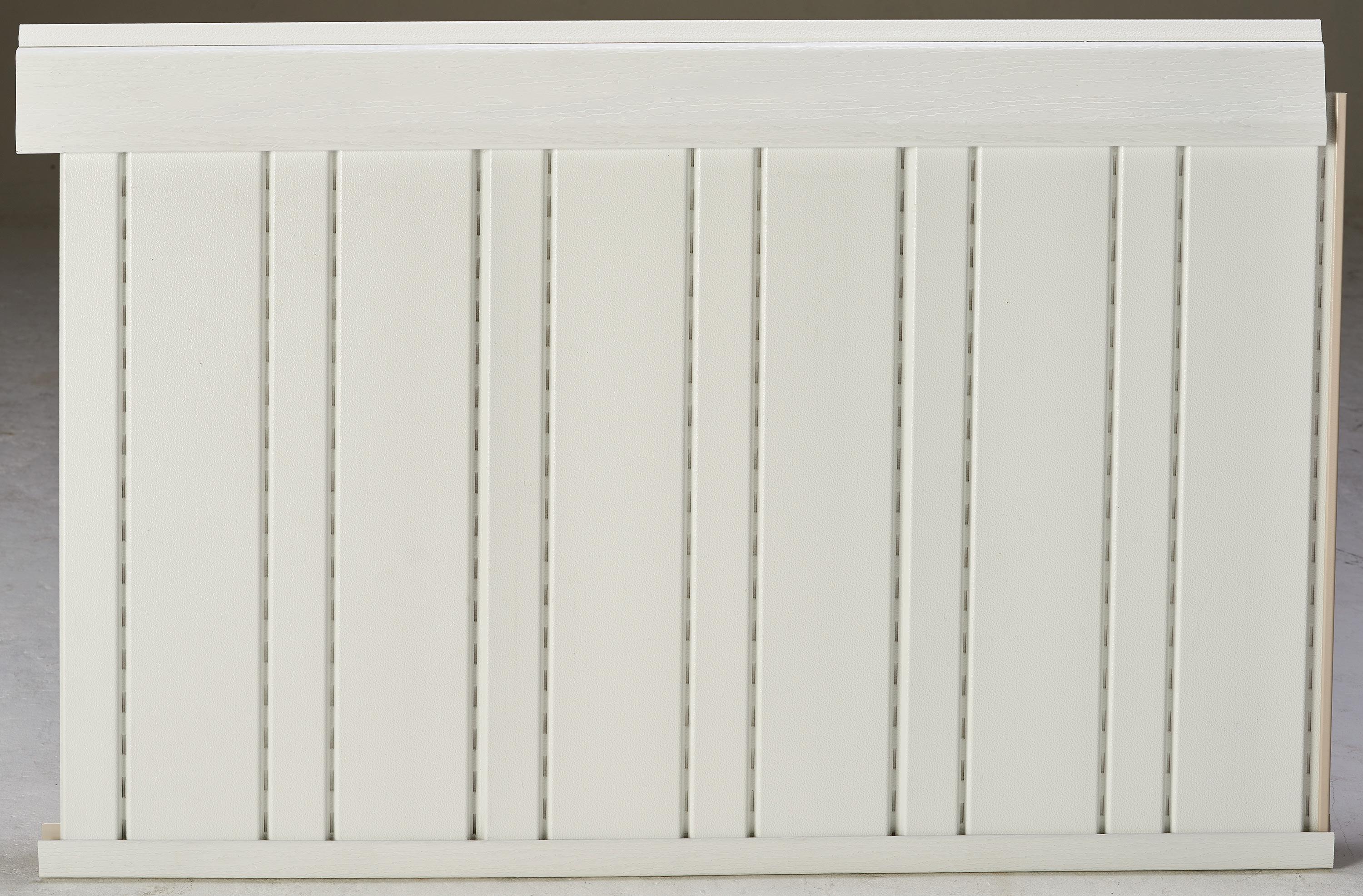
































How is it possible that 2022 is almost in our rearview mirror? It feels like yester day; we were thinking about what changes this year might bring. It’s exciting to see how many of the trends we thought might arrive this year have been em braced by consumers.

Hurricane Ian leveled the Florida Gulf Coast with wind, rain, and storm surges that devastated many of the state’s resi dents, including those in manufactured home communities, before moving off coast and back toward South Carolina.

TThat’s easy, isn’t it? It seems simple. I made that. Yes, that came of my mind and hands. Easier said than done.
The concept of creating something. The birth of a dream, an intent, a mission of an individual or organization is a practice that often is overlooked and under-appreciated. The homes we sell take years of planning. We may be able to complete an en tire home in a day, but the ability to do that came from a lot of precious time and effort in design, prototype, build and rebuild. The communities we provide for our residents are thoughtful ly designed, from home orientation, to curb cut, gardens, and amenities. Sales teams are designed and built. This magazine was designed and built. Government relationships, corporate partnerships, the evolution of a company from private to pub lic — it’s all designed and built by the bright minds and diligent hands of our industry people.
So take a moment to think about the effort you put into the day, the subtle seemingly easy strokes of leadership, man agement, research, team and client interaction. All of those things are a creation, too. A program, a product, or notion where there once was nothing.
Congratulate yourself for those efforts, and provide some praise for a colleague, too, because all we do to design and build this industry depends on that network of professionals we cu mulatively create and maintain over time.
VOLUME 5 • EDITION 6
NOVEMBER / DECEMBER 2022 MHInsider.com
Publisher Patrick Revere patrick@mhvillage.com
Senior Graphic Designer

Merit Kathan merit@mhvillage.com
Contributing Editor
George Allen gfa7156@aol.com
Editor
Sean Vichinsky sean@mhvillage.com
Contributors
James Cook Suzanne Felber
Advertising Sales (877) 406-0232 advertise@mhvillage.com
Editorial & General Inquiries
Patrick Revere 2600 Five Mile Road NE Grand Rapids, MI, 49525 (616) 888-6994 patrick@mhvillage.com
Although we make every effort to ensure that the information in this issue was correct before publication, MHVillage, Inc. and the publisher do not assume and hereby disclaim any liability to any party for any loss, damage, or disruption caused by errors or omissions, whether such errors or omissions result from negligence, accident, or any other cause. Opinions expressed are those of the author or persons quoted and not necessarily those of MHInsider or the publisher MHVillage, Inc.
Copyright ©2022 MHVillage, Inc. All rights reserved. Reproduction of MHInsider content, MHI or other contributor content, in part or in whole, is prohibited without written authorization from MHVillage, Inc.
MHInsider™ is published by:
Patrick Revere is associate vice president of MHVillage and publisher for the MHInsider magazine and blog for industry professionals. His background is in print news, language, and communication.
2600 Five Mile Road NE Grand Rapids, MI 49525 (800) 397 2158 www.MHVillage.com

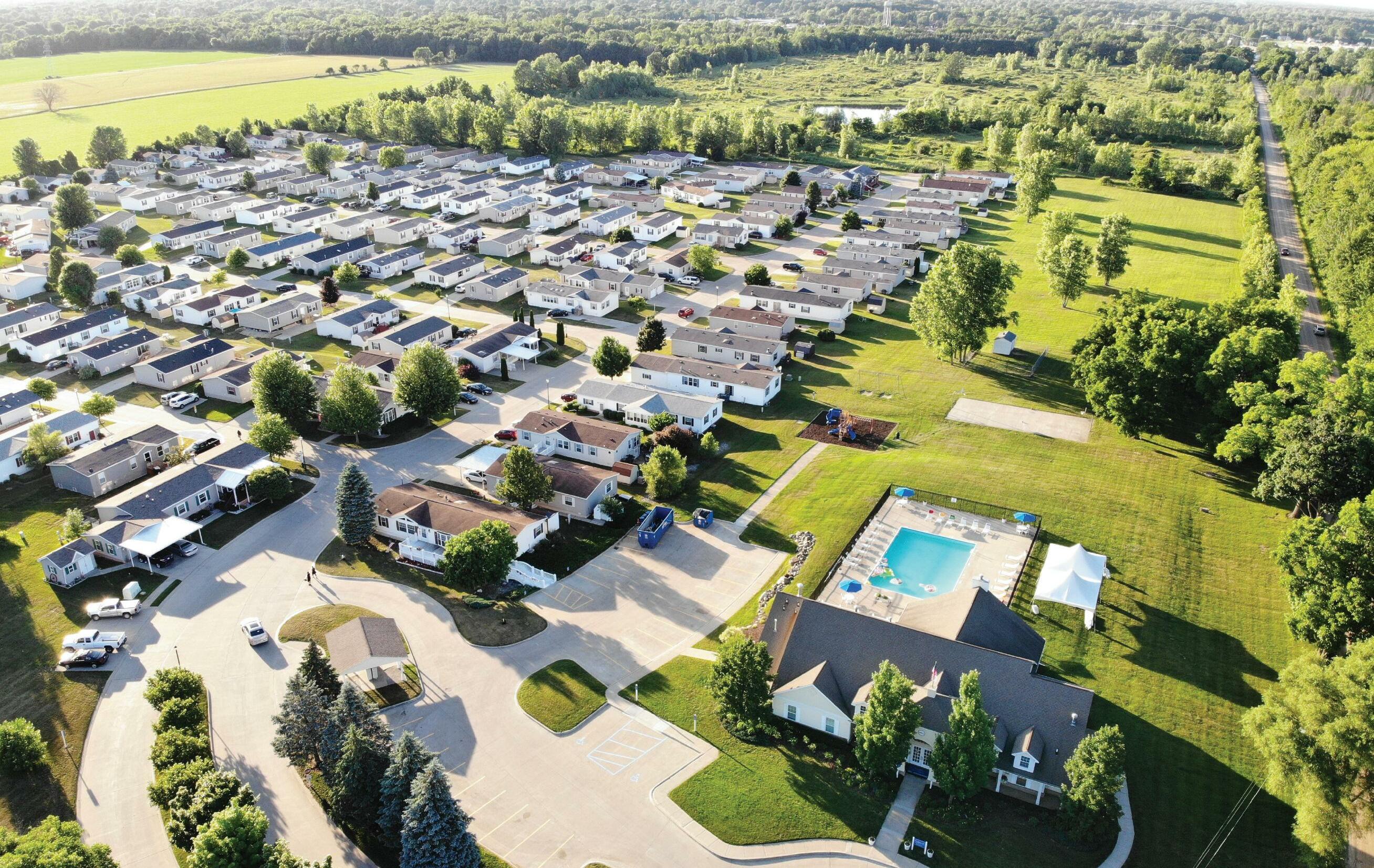


NCCER Partners with Procore Technologies for Workforce Development
The National Center for Construction Education and Research will partner with Procore Technologies, a leader in construction management software, to connect the construction industry on a single global platform. Procore helps firms increase efficiency and accountability by streamlining and mobilizing project communications and documentation. The construction industry faces a massive labor shortage, and the Procore/NCCER partnership is seen as an opportunity to educate, train, and attract students and individuals to the industry. “Their experience and expertise with innovative technology will be a valuable asset as we continue to push construction education into a new age,” NCCER President and CEO Boyd Worsham said of Procore.
RHP Properties Purchases Florida Community
RHP Properties, the nation’s largest private owner and operator of manufactured home communities, has acquired Winter Haven manufactured home community, a 55-plus property with 238 homesites. “We take great pride in the communities we acquire and manage, and one of the many things that excite us about Winter Haven is the opportunity to invest in a community that clearly places a great emphasis on quality of life,” said Ross Partrich, CEO of RHP Proper
ties. “We are committed to fostering an environment where Winter Haven residents can fully engage in all that this incredible community has to offer.”
Capital Square Buys Florida Community
Country Lakes Village I and II in Manatee County, Fla., have been purchased by Virginia-based Capital Square 1031 for nearly $70 million. It also owns prop erties in nearby Port Charlotte, Palmetto, Lakeland, and Vero Beach. The property, split into a pair of communities, has 470 homesites, a pool, pickleball courts, a clubhouse, a library, tennis courts, billiards, and other social activities.
Four Leaf Properties Purchases Michigan Community
Newburg Meadows in Tecumseh, Mich., has been purchased by Four Leaf Properties and will be expand ed by 126 homesites. “Our plans include the addition of new homes and additional community programming to foster the fun and relationships that are a hallmark of our FLP resident lifestyle experience,” Four Leaf Properties Managing Partner Michael Callaghan said.
MHPC Buys Community in North Carolina
Manufactured Housing Properties Inc. has pur chased Red Fox manufactured home community with 51 homes and homesites on nine acres in Clyde, N.C., within the Asheville MSA. The company now
owns six communities in the Asheville area. The company, which has purchased six com munities in 2022, now owns and operates 49 communities with 2,350 homesites.
Yuma Community Goes for $80 Million

Sun Vista Resort, a 55-plus manufactured home commu nity in Yuma, Ariz., has been acquired for $80 million. The pet-friendly, amenity-rich resort has 1,230 homesites and indoor and outdoor swimming pools, a spa center, a fitness center, a music room, a library, a recreation and entertainment center, a computer and video library, and dog parks.
Flagship Buys Two Communities for $32.3 Million
Flagship Communities, a real estate investment trust has pur chased a pair of manufactured home communities, one in Louisville, Ky., and another in Bloomington, Ill., for a price of »

$32.3 million. Flagship Communities President and CEO Kurt Keeney said the properties each are located in markets the company is looking to expand. “Growing our portfolio in key markets allows us to leverage operational efficiencies and economies of scale,” he said. “The properties are located in highly desirable areas which are expected to generate above-market growth over time.”




CBRE has hired for its San Diego office Erik Ed wards as senior vice president in charge of debt and structured finance. Edwards has more than 21 years of experience in commercial real estate finance, and most recently worked with Wells Fargo as director of the multi-family finance group where he where he led and participated in originating and closing more than $5 billion in agency loans, and other loans brokered to outside lenders, on manufactured home communities throughout the U.S. He has a bachelor’s

degree in business economics from the University of California, Santa Barbara, and an MBA from the University of California, Irvine.
A $10,000 donation to a Las Vegas elementary school classroom will provide needed resources to promote academic success. The nation’s largest private owner of manufactured home communities is working with AdoptAClassroom.org to support Arturo Cambeiro Elementary School as it has with other schools in previous year. “We are so thankful for the generous donation RHP has provided to our school,” said Chris Popek, principal of Arturo Cambeiro Elementary. “Our teachers work extremely hard at making learning enjoyable and engaging and I am excited to see them put extra instructional resources to use that the donation will fund.” MHV
Maverick Commercial Mortgage, Inc. enjoyed a strong 2021, securing financing across all multifamily and commercial product types—with a particular focus on manufactured housing communities (MHCs). MHCs are becoming more mainstream to finance, so new opportunities for loan types are emerging. Maverick closed 7 loans in excess of $34,995,000 for MHC properties in 2021.


50% Debt-To-Income for Eligible Customers




Available for Customers With a Credit Score of 575
NEW Down Payment Options
5% Down Payment Available for Customers on Private Property with a Credit Score of 575

5% Down Payment Available for Customers in a Community with a Credit Score of 650
20% Down Payment Available for Community Buyers With a Credit Score Between 575-649
NEW 25 Year Loan Term

NEW Loan Limits up to $375,000
NEW MAX ADVANCE up to 180% of gross invoice + $8,000/section + advanceable buy down points for eligible borrowers
5% Down Payment Option
Maximum Debt Ratio 50%
Available for Customer With a Minimum Credit Score of 575
NEW 30 Year Term Limits for ALL Borrowers
NEW Loan Limits up to $420,680

As manufactured housing professionals, the real measure of expansion we all want to see is in the percentage of national home starts, where we’ve been hovering around 10 percent and need to grow toward 15 to 20 percent.
OOverall, the manufactured housing industry has had a good year in 2022. The level of new home production was up again and has plenty of room to climb. To say the industry, any industry, had good growth in 2022 is remarkable, as we will detail further in the sections to come.
Many employers have managed, somewhat surpris ingly, to dodge and weave through the travails of the pandemic — lockdowns, illness, added health and safety regulations — and the labor market continues to rise from a slumber partially induced by obtuse govern ment funding to would-be workers. Though hiring and training was a challenge in 2019 and continues to be, the labor market has righted itself enough to both buoy a tenuous economy and provide some amount of confidence for employers, especially in the man ufactured housing industry, to be assertive and hire strategically for the long term.
That said, 2022 was a year that had its challenges. We will detail them from a general perspective, and provide some insight into how each challenge affected the manufactured housing industry specifically.
The hopeful talk of a “soft landing” died a quick death in the late summer. Year over year inflation rose above 9 percent mid-year and receded very mildly in August. Most analysts feel outsized inflation — pretty much anything more than 2 percent — will persist into the new year and 2024, though there is a minority pointing to the similarity of today’s trajectory with 1970s peak inflation, with the added benefits of the Fed’s recent »
historic measures to stave off inflation by raising rates, and cooling its activity in the bond market.
Admittedly, the reduction in late summer energy prices, including gasoline, helped level out infla tion as fall was to settle in, before ticking up again on OPEC policy. Furthermore, critics are quick to point to the continued rise of core inflation as both the problem and the indicator of any significant progress. In the same month inflation dropped 0.10 percent, energy, food, and shelter increased by 0.2 percent and core inflationary (those excluding energy and food) marks rose 0.6 percent.
While we can acknowledge the benefits of lower energy and food prices, the “entrenched” nature of inflation today continues to keep many households up at night.
Economist KC Conway, in his presentation at the SECO Conference for Community Owners in October, noted that inflation pressure is difficult at home, and particularly daunting in the workplace.
“New construction is in a difficult spot with the anticipated cost overruns — maybe more than 32
percent in the next two years,” Conway said. “How do you plan a project and get a good loan with overruns?”

What happens when the cost of goods shoot up as quickly as they did in 2022? Coming off a roaring economy in 2021, and again, overfed by government spiffs, there was a glut of money in the system, and a rabid consumer appetite despite the seemingly “transitory” supply chain disruptions that created scarcity and drove up prices. Yes, the U.S. economy was bound to see some level of inflationary pressure, and when it does the Federal Reserve steps in to raise interest rates. The expectation is that gradual rate hikes that make it harder to access money, for a home or capital upgrades for instance, would slow spend ing, cool the economy, and flatten inflation without dropping the economy into a recession. Easier said than done. Where the Fed usually steps in, the Fed in 2022 probably should have dove head first. It’s easy to see now, and the Fed’s subsequent actions — raising
rates to the tune of 75 basis points at three consecutive meetings for the first time ever — have shown its own careful approach of early-year hikes at 25 or 50 basis points could have used more weight.
Increased interest rates across all sectors means less profit and reduced investment. While the manufactured housing industry has been noted as being “recession proof”, there is only so much pain property owners and investors want to feel. The industry is motivated by providing houses, increasing homeownership, and that certainly is a more diffi cult proposition when our homebuyers who require financing find it harder and more expensive yet.
Conway said he anticipates a 4.5 to 5 percent 10-year treasury rate by mid 2024, and a 30-year mortgage at 8 percent.
He was critical of the Fed, saying the late, aggressive rate hikes is a blunt instrument for a problem that could have been better handled by sharpening a pencil and managing expenses, as he advised manufactured housing industry operators to do.
“The Fed should be encouraging the banks to lend,” Conway said. “But they’re discouraging lending.”
We just covered increased interest rates, so the next obvious topic is finance and lending. Every home or community transaction gets more expensive under the specter of increased rates. The obvious bit of relief here is that the increased interest rates induced by the Federal Reserve have an equal impact on everyone. The price of buying any home in any neighborhood increased on scale, so the manufactured home con tinues to meet the same market need and can expect a somewhat similar market performance. The real story when it comes to lending for manufactured housing has less to do with increased rates than it does with general acceptance and availability of financing for manufactured homes, including a more robust secondary market where chattel loans are regarding in the same light at the conventional mortgage. Fan nie Mae and Freddie Mac, for instance, have helped the industry with plenty of secured financing for communities — commercial real estate transac tions — but have yet to embrace securitization for homes as personal property.
The labor market is a two -sided coin. As mentioned earlier, it is strong enough to help buoy the economy against recession, gaining 263,000 non-farm payroll jobs in September, but remains vexing to employers who need to hire efficiently, effectively, and with confidence the plan will retain and grow talent.
So how is the labor market both good and bad? Well, in the fourth quarter, the labor market could be de scribed as well balanced if not robust. Unemployment dipped to a satisfactory 3.5 percent. The difficulty is that the participation has been low and remains so. That is to say, there is a job for nearly everyone who wants a job, but there are still too many people who don’t want a job. That’s a cocktail of matters. Firstly, the middle of the labor force remains in a pandemic hangover. Younger workers and lower earners have had more cash on hand than ever, and even though most benefits have ended, some of the reserves remain. There are fewer retail, hospitality, and restaurant jobs both because there are fewer businesses in those sectors, and because fewer workers are interested in those positions.
“The restaurant, hospitality, and retail workforce said we’re done,” Conway noted. “They’re going to get one of those remote jobs. If I were you, I’d think about building in home offices and getting s ome really good internet.”
The ability to reliably order materials at a reasonable cost for manufacturing or otherwise has been on shaky ground since the onset of the pandemic. There has been some softening with borders re-opening and trade regulating, but sourcing lumber, chips for electronics, windows, and all variety of tapes and plastics continues to be impossible at times and often costly and time-consuming. Unfortunately, any relief from supply chain solutions is being eroded by inflation throughout the economy.
The top operators in the business — whether in communities, homebuilding, or the service/sup ply sector — continue to be aggressive in growth through acquisition. In each edition of MHInsider, »
in The Happenings section, we detail a lengthy list of transactions, individual communities or small portfolios being acquired by the larger, national operators. Likewise, builders continue to fill out their offerings or shore up their presence by buying existing companies, most often continuing under the proven brand and market approach. While we’ve seen the headlines of million-dollar deals, there is plenty more opportunity for consolidation. The “industry is aging” is a conversation that often arises. Attention is being paid, and efforts are being made to ensure that vital resources — like haulers and set teams — continue in the marketplace under new leadership and ownership as necessary. For every seller there is the right buyer.

The industry is expanding in every way. Builders are opening plants that haven’t seen homebuild ing activity in decades, organizations throughout manufactured housing are investing in their teams, and community operators are following through
on thoughtfully planning how new homes will be brought in on that adjacent land. Lenders are coming back to the industry as well, offering a variety of new programs and products for homebuyers and commu nity operators. The ADU business is expanding as new states and municipalities on an increasingly regular basis are allowing the backyard or adjacent “cottages”. New HUD Code homes on a permanent foundation with a garage or porch, higher roof pitch, and interior energy and efficiency requirements now qualify for conventional mortgages. The CrossMod homes in a neighborhood setting are an emerging solution for many developers and buyers looking to the middle market. As manufactured housing professionals, the real measure of expansion we all want to see is in the percentage of national home starts, where we’ve been hovering around 10 percent and need to grow toward 15 to 20 percent. The opportunity for continued growth exists, and it is our responsibility to make it happen. MHV






HHurricane Ian leveled the Flor ida Gulf Coast with wind, rain, and storm surge that devastated many of the state’s residents, including those in manufactured home communities, before mov ing off coast and back toward South Carolina.

Meteorologists said Ian was among the five strongest storms ever to make landfall in the U.S. and was Florida’s most destructive storm since 1935. Estimates are that the storm surge was as high as 15 feet when it made landfall in Fort Myers, the high winds and downpour pushing into North Port, and Port Charlotte. The loss of life at the time of printing was approaching 150 people.
Early modeling showed that about 800,000 homes through the storm’s path were exposed to hurricane-force winds. The property loss will take months if not years to determine, but early estimates have damage coming in between $80 and $100 billion.
The Florida Manufactured Housing Association put out numerous emails to its members in advance of and following the storm to provide information and resources for those in need, including access to a new catch-
all website for storm relief found at floridastormrelief.fl.gov.
HazardCall Helps Floridians Avoid Storm, Find Help
HazardCall, which provides precise communication services during emergency and crisis situ ations, said it made calls and sent information on storm watches and warnings, as well as evacuation, return and recovery resources, to more than 2,300 residents and employees of community clients through the duration of the storm.
“We have a client in Sarasota that was notified at the same time who was very proactive and was able to communicate to the resi dents an evacuation plan, which was off-site because the clubhouse there wasn’t rated for the storm,” Gene Norman, a meteorologist and a vice president at Hazard Call, said. “Most importantly, the management and residents were all able to get a message about when it was safe to come back to these communities.”
HazardCall was serving a dozen clients with properties in Sarasota, Bradenton, Ocala, Jacksonville, and Savannah, Ga.
“In a large emergency situation you need to get in touch with a large number of people quickly at the same time,” Norman said. “We heard from one manager who said ‘We really couldn’t have done this any other way.’”
Sun Communities Continues Cleanup Sun Communities, the Michigan-based real estate in vestment trust, reported in the
days immediately following the storm that it had teams in the area assisting with cleanup and restoration, going to its commu nities and marinas with trucks and travel trailers filled with supplies and food.
Sun stated that three of its RV properties in the Fort Myers area, with a total of 2,500 sites, sustained significant flooding and wind damage. The sea wall and docks at one marina were damaged, and a manufactured home/ RV community had damage primarily to trees, roofs, fences, skirting, and carports. At other Sun marina properties, docks, buildings, and landscaping sustained limited wind and water damage.
“Our thoughts and support go out to all those impacted by Hur ricane Ian. Nothing matters more than the safety of our residents, guests, and team members,” Sun Executive Vice President of Opera tions and Sales Bruce Thelen said.
Equity LifeStyle Properties, headquartered in Chicago, con tinues to assess the impact of Hurricane Ian on its Florida, North Carolina, and South Carolina coastal properties. Initial assess ments in Florida showed limited wind-related structural damage to common areas. The properties have been affected by flooding, wind, blown debris, falling trees, and falling tree branches.
Electric power, water, and wastewater disruptions led ELS to
temporarily close RV parks Cape Haze, which had significant flood ing and wind damage, as well as Gulf Air RV and Fort Myers Beach RV, which have 246 and 292 sites, respectively, and Palm Harbour Marina with 260 slips.
“Consistent with prior storm events, newer homes appear to have held up well during the hurricane,” the company said in a released statement. “However, we have seen damage to some homes, carports, screened rooms, and awnings.
“Cleanup efforts have begun in many of the communities, and we are working towards quickly returning our properties to full operating condition,” it said. “We are in the process of estimating costs associated with our cleanup and restoration efforts, and the company believes that it has adequate insurance, subject to deductibles, including business interruption coverage.”
The company for a time was unable to access a pair of other RV and marina properties, Pine Island RV in St. James City and Fish Tale Marina in Fort Myers Beach, Florida, with more than 600 combined slips.
“Our highest priority is the safety of our residents, guests, and employees,” ELS President and Chief Executive Officer Marguerite Nader said.
UMH Properties said the Sebring, Fla., manufactured home com munity it owns in partnership
with Nuveen Real Estate endured 75-mile-per-hour wind and more than 10 inches of rain with limited damage.
“Fortunately, none of our residents or employees were injured,” UMH President and CEO Sam Landy said. “Several of our homes had minor roof and skirting damage, four sheds were destroyed, and a few palm trees were uprooted.”
The limited damage to the community’s homes demonstrates the quality and durability of new manufactured homes, Landy said.
“While our damage was mini mal, others were not as fortunate and faced significant damage. We have homes available and are working to provide housing to those who have been displaced,” he said. “UMH will accelerate, if possible, the development of new homes in Florida to address this urgent housing need.”


The co-founder of SECO Con ference for Community Owners Spencer Roane said during an address at the recent gathering near Atlanta that the non-profit
organization was accepting do nations to aid Florida residents, and would send $25,000 of its own to help.
“No amount is too small, $10, $20, $40… I know many of you can afford much, much more, and I’m sure with our combined efforts we will be able to make a significant difference during a time that it’s most needed,” he said.
lotte,” Kelly said. “We’d show up in the morning and distribute to residents of the communities in the affected areas, or we’d just set out the supplies at its clubhouse for distribution later… We just try to do our part with a lot of help from a lot of the Cavco team.”
They delivered home care goods, paper goods, and snacks.
Gathers

Daily Necessities for Storm Victims
Mike Draper and Mark Kelly from Palm Harbor Homes of Florida gathered a team to get resources to residents in some of the state’s most devastated areas.
“We put out a request for sup port from each of the Cavco plants, and we’re talking 27 locations,” Kelly said. “Virtually every entity throughout the organization re sponded, not just the plants, and gave much more than requested.”

The group ended up raising $27,000 and sending employees to area hardware and home good stores to buy supplies.
“We went to about 12 different communities throughout Punta Gorda, Fort Myers, and Port Char
“We delivered 6,000 bottles of water, 750 gallons of gas, 1,100 batteries,” Kelly said.
James Cook of Yale Realty and Capital Advisers posted a video tour of some of the hard-hit areas on social media following the Hurricane.
“We visited many communities bringing everything from diapers and wipes, to canned foods, Neosporin, gloves, and band-aids,” he said. “I took a couple of these videos but it’s an amazing example of how good our Hurricane An drew standard wind Zone 3 homes hold up.” MHV





MHI’s NCC Fall Leadership Forum
Wednesday, Nov. 2 — Friday, Nov. 4, 2022
Chicago | Westin Michigan Ave.
The NCC Fall Leadership Forum held each year draws more than 400 attendees and is the only stra tegic executive-level event of the year for national community owners. The meeting is geared toward professionals involved with manufactured home communities as an owner/manager, manufacturer, service provider, broker, lender, or consultant. Orga nizers and presenters explore new ideas, examine trends, and offer a unique industry perspective.
Louisville Manufactured Housing Show
Wednesday, January 18 — Friday, January 20
Louisville, Ky. | Kentucky Exposition Center
The Louisville Manufactured Housing Show is the nation’s largest indoor show for manufactured home professionals. The annual gathering is organized by the Midwest Manufactured Housing Federation, supported by the state associations of Illinois, Ohio, Michigan, Indiana, and Kentucky. The show brings out an array of new manufactured home designs, the latest in technology, the best in suppli er offerings, and a look at all the newest amenities and offsite-built options.
International Builders Show
Tuesday, Jan. 31 — Thursday, Feb. 2
Las Vegas, Nev. | Las Vegas Convention Center
The NAHB International Builders’ Show® (IBS) is the premier global annual event to connect, educate, and improve the residential construction industry. It is a hub for new product launches, construction demonstrations, industry thought-leader sessions, home tours, workshops, and panel discussions. Man ufactured housing industry leader Skyline Champion
Corporation showed a pair of Genesis series homes at the 2020 IBS Show in Las Vegas, and after the 2022 Orlando event, IBS is primed for a return to Las Vegas.
Biloxi Manufactured Housing Show
Monday, March 20 — Wednesday, March 22
Biloxi, Miss. | IP Casino Resort and Spa
Formerly held in Tunica, Miss., the South Central Manufactured Housing Institute has moved its annual manufactured home show south to Biloxi. Each year, SCMHI hosts North America’s largest indoor/outdoor manufactured home trade show. The 2023 show fea tures an impressive exhibit hall that showcases top builders, the newest features from industry suppliers, and educational training to help build a business.
MHI Congress & Expo
Wednesday, April 19 — Friday, April 21
Las Vegas | MGM Grand
The national trade show where manufactured housing professionals can obtain the knowledge and resources necessary to excel in today’s housing marketplace. Choose from attending top-quality educational programs with powerful speakers, networking with the industry’s most suc cessful professionals, developing new business strategies, and visiting the exhibit floor to see the latest products and technologies.
If you have an event or gathering — virtual or in person — you would like to have listed with MHInsider, please contact us at: www.mhvillage.com/pro/manufacturedhousing-industry-trade-shows/













 Contributed by Suzanne Felber / Lisa Stewart
Contributed by Suzanne Felber / Lisa Stewart
One of the hottest tickets in town, the TMHA Conference in San Anto nio was sold out weeks before the event. With more than 400 attend ees, The River Walk in San Antonio was definitely the place to be! Even Maria Horton of Newport Pacif ic, pictured here with MHI’s Mark Bowersox, became an honorary Texan with her pink cowboy hat.

Steve James, president of Me ridian Homes, Dwayne Teeter, president and COO for Oak Creek Homes, and Ed Lasater, president of A-1 Homes, take some time during a TMHA mixer to have a cocktail and catch up.

Liz and Jimmy Griffith, from Champion Home Builders, take a moment for a portrait following his taking on the position of chairman of the board at TMHA.


Of course, great networking and a legendary casino night kept everyone busy, well-fed, and excited about the industry. As always, the staff of the Texas Manufactured Housing Asso ciation thought of every detail to make this event so special. Door prizes, casino prizes, Tex as-themed meals, snacks every afternoon - they even had Tex as Wines from some of the best winemakers in Texas to taste.

 by Sean Vichinsky
by Sean Vichinsky
FFor the first time in three years, MMHA members converged onto the Suburban Collection Show place in Novi, Mich., for the annual Michigan Manufactured Housing Association Conference.
Industry leaders and legisla tive and government officials met on Thursday, Oct. 6 to discuss ongoing industry trends and challenges, share manu facturer and retailer updates, and to toast retiring industry veteran Bill Sheffer.
“I really hope that what we do is be driven by our attention to our three audiences: the public, which you’re seeing an example of that at this show through the promotion of the industry, the policymakers and the media through constant advocacy, and then of course our members,” MMHA President
and CEO John Lindley said when opening the event.
A key portion of the confer ence was dedicated to an overall industry update in the face of volatile macroeconomic trends, along with ongoing supply chain considerations. Mark Bowersox, president of the Manufactured Housing Institute, delivered the industry update.
Throughout the day, panels covering legislative updates, De partment of Energy guidelines for manufactured homes, manufac turer and finance developments, and online marketing practices took place. Nearly 100 manufac tured housing professionals were in attendance.
As part of the MMHA Confer ence, industry professionals also got to preview six new model homes from Skyline Champion
and Clayton Homes. The homes were displayed as part of The Novi Home Show, which took place at the Suburban Collection Show place Oct. 7-9, a show that is open to the general public.
“Our manufacturing partners are crucial in demonstrating the value of manufactured housing to the general public,” Lindley said prior to the MMHA Conference.
A special VIP reception followed the MMHA Conference for in dustry professionals to tour the model homes on site, as well as to honor Sheffer, the retiring MMHA executive director. MHV
Sean Vichinsky is an editor of MHInsider and a mar keting copywriter for MHVillage.


TThe home show that is the annual jump start to the new year and the launchpad for the spring selling season — The Louisville Manufactured Housing Show — returns for the first time since 2020 when industry professionals will meet at the Kentucky Exposition Center Jan. 18-20.
Organizers for the show have said dozens of new manufactured homes will be on display, the largest such show in the country. The Louisville Show is hosted by the Midwest Manufactured Housing Feder ation, which represents the states of Kentucky, Ohio, Indiana, Michigan, and Illinois.











Held in Louisville for 61 years, the industry gathering showcases the latest lineup of new homes, products, and services for manufactured housing professionals.

Eric Oakes, of Green State Credit Union, is the MMHF show chairman for 2023.
“It’s been a long time coming,” said of the show’s return. “ We’re excited to welcome manufactured housing professionals back to Louisville for the first time in three years,” Oaks said. “This show is the year’s first major opportunity to browse new homes before the spring buying season fully starts, and we’re proud to be a part of it.”
In addition to the homes, The Louisville Show each year brings together an impressive lineup of education seminars, networking opportunities, and exhibitors from the industry supply and services sectors.
Industry professionals can register for the event, and exhibit and sponsorship opportunities remain.
For more information on the 2023 Louisville Show, visit www.thelouisvilleshow.com, or con tact the show coordinator Trisha Ragoopath-Le, of Show Ways Unlimited, at (770) 587-3350 or showways.tl@gmail.com. MHV

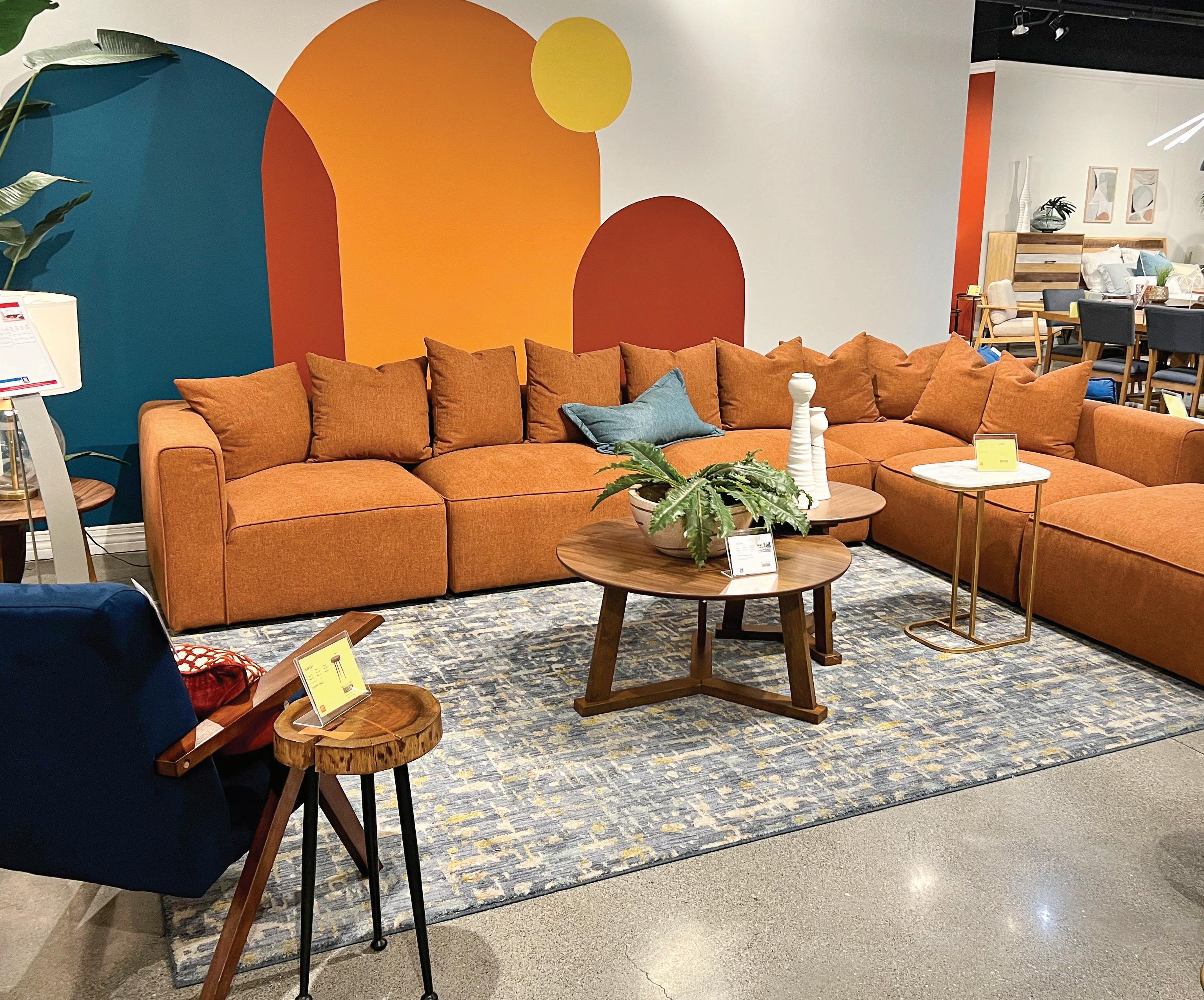
HHow is it possible that 2022 is almost in our rearview mirror? It feels like yesterday; we were thinking about what changes this year might bring. It’s exciting to see how many of the trends we thought might arrive this year have been embraced by consumers. Not only have these forward-thinking design trends become a reality, but they are also growing in relevance in the new year. »
Significant shifts are coming to the look and feel of our homes, especially in the interiors in 2023. Softer, more complex palettes will replace stark white and gray rooms. One of the color seminars we attended even predicted that white kitchens would be a thing of the past by 2025. Be prepared to see warmer colors like bone, mocha, leafy greens, and dusty blues become the new neutrals and replace the whites and grays that have been so popular.
Desert tones will replace the cool colors we have seen for the last ten years. Instead, reds, or anges, terra cotta, cactus green, and sky blue will be the hot accent colors and looks for 2023.
The grays that have been so popular through the last decade are fading out, and white shiplap siding is shipping out, too. It is being replaced by smooth, natural, and lightly stained wood panels used in strategic locations that add a warm look to a room.
The pandemic brought a new focus on health and wellness, which will continue to stay strong throughout the next decade and beyond. Identifying products that are made of sustainable, renewable materials helps today’s buyers make educated decisions. With factory-built housing being one of the most energy-efficient building forms, our industry has an excellent opportunity to share the story of how we are helping the environment. There is also a re newed interest in locally sourced, made-in-America products.
The Green House effect is being seen everywhere. Biophilic De sign, using natural light, natural materials, and vegetation, is here to stay. Lighter natural woods that are pickled or just sealed are back. Bringing the outside in with color, accessories, and artwork will continue to grow in importance.


In 2022, the housing crisis en tered an age of minimalism. As the lack of affordable housing contin
ues, we will see smaller spaces and more multi-generational living environments. Furniture is scaled down with open legs and arms to give a more open feel to a smaller space. But, again, watch for every detail to make a statement, and less is more.
Authentic conversations are treasured again. Cozy, comfortable rooms where you want to sit and stay for a while continue to replace the cavernous great rooms that we have been embracing for years. Dining rooms are back at the top of the list of what homebuyers want. Post-COVID entertaining is more likely to happen at home than at a restaurant or gathering space. Stark, uncomfortable dining chairs are being replaced with upholstered, roomy ones that encourage you to sit down and stay for a while. Elegant bar carts and bar spaces are also back in vogue. »
Craftivism is “a new social process of collective empower ment, action, expression, and negotiation.” Using crafts and craft projects to advance social causes will become essential to many. Shopping for products that support a specific cause, such as animal rescue, women’s causes, child welfare, and others, will become even more important and celebrated in the future. Flex spaces are becoming even more popular, and they don’t have to be huge spaces. A niche in a hallway or extra space off the utility room can give consumers a place to explore their inner passion.
Digital Design is popular in Europe and is heading this way. It is about seeing the world in a digital form and will be extremely popular in the teenage demo graphic and move to other ages
in the future. Red looks purple on most computers, which has led to purple being seen more in products targeting this demo graphic — they are used to seeing the world on their computers. Small-scale workspaces, the ability to plug in, and new technology will bring us things we haven’t even thought about. Hopefully, with the pandemic largely behind us, the interest in creating a home people want to spend time and entertain in will stay with us. In addition, there is a renewed interest in “living with in your means,” and affordable housing is becoming a priority for younger homebuyers and our senior buyers too. The stigma that factory-built housing has carried with it for so long is finally fading away, and living in a facto ry-built home is now considered a wise decision. We will also see more downsizing where people
decide to reduce their monthly expenses by moving into a more affordable home.

It feels good to be positive and looking forward to a year full of color, optimism, and living well. Here’s to 2023! MHV
Lifestylist Suzanne Felber has been active in the housing industry for more than 30 years. Felber realized that factory-built housing was the housing of the future, and has been actively working to promote the lifestyle ever since. She started American Housing Advocates as a way to share the great news about manufactured housing. To learn more about her work, visit www. lifestylist.com and www.american housingadvocates.com, or read her @lifestylist social media posts .

• Network with thousands of industry professionals that attend the show.
The Louisville Show has drawn manufactured housing professionals together for over 60 years. By attending the year’s first major event you can: u u


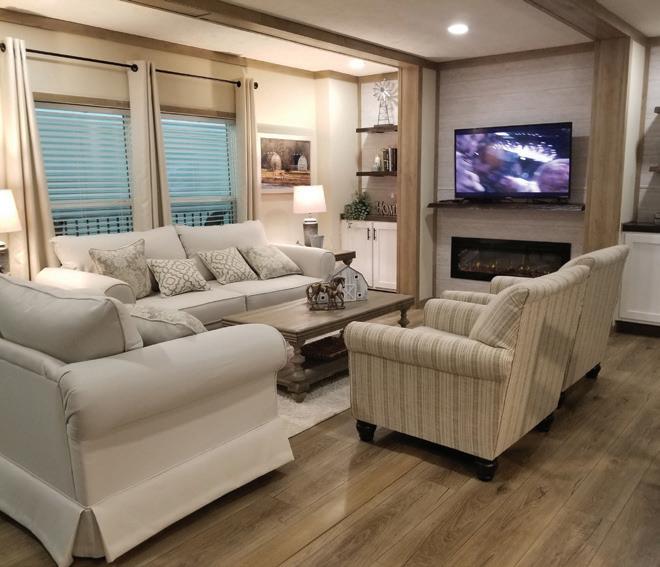
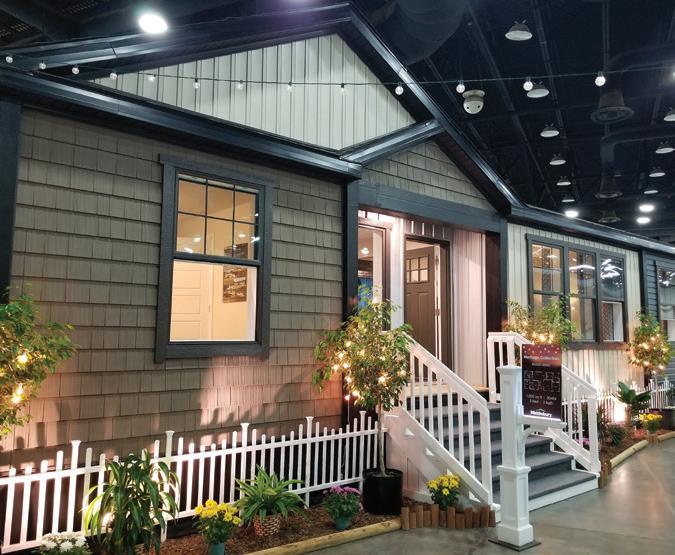


• Learn about the newest trends and innovations from dozens of exhibitors.
• Show off your products and services to key purchasing decision makers in the manufactured housing industry.








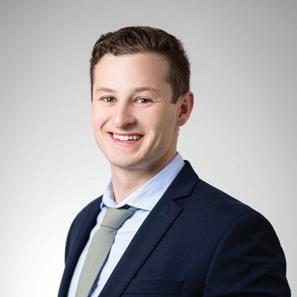


CHRIS SAN JOSE
President of Lending 305-760-9060
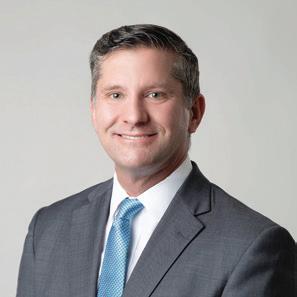
Chris@yaleadvisors.com
GREG RAMSEY
Vice President of Lending 904-864-3978
Greg@yaleadvisors.com
JAKE LEVIN
Director of Equity Capital Markets 917-847-2304

Jake@yaleadvisors.com




THE ONLY TRUE NATIONWIDE TEAM
An award-winning, collaborative national team of industry experts that provide tailored service to our clients in their dedicated markets.

YALE SELLERS NET 10-20% MORE

We have a proven track record of netting sellers 10-20% more in proceeds compared to selling direct.
Offering clients the lowest rates and fees while providing the optimal loan terms, In addition, our borrowers benefit from a 99% application to closing ratio.
With access to our exclusive network of 2,500+ pre-qualified buyers and 200+ specialized lenders and an Equity Division that establishes partnerships between operators and capital.
MITCH GONZALEZ
Director of Land Sales & Development 734-447-6952
MGonzalez@yaleadvisors.com
SStudio Shed will triple production capacity at its manufacturing facility in Colorado to meet consumer demand as local officials across the country relax accessory dwelling unit zoning regulations.

The adoption of backyard or side yard dwellings in dense areas is being used to alleviate the national housing crisis and catalyze new housing options.
Studio Shed can ship as much as 1,000 square feet of product a day thanks to an added 20,000 square feet of manufacturing space and investments in new industrial equipment, fabrication stations, and employees, the company stated.
“We have continued to see increased demand from homeowners to build detached spaces for a range of flexible scenarios. From home offices, guest suites, workout and wellness studios, ADUs are a lifestyle solution with real ROI,” Studio Shed co-founder and Creative Director Jeremy Nova said. “We have been providing end-to-end design, manufacturing, and installation of ADUs nationwide since 2008, and now, with our new factory capabilities, we are able to service even more customers nationwide.”
Nova said the company’s team of ADU experts is committed to working with each homeowner individually to help with every step of the process, from navigating complicated permitting rules in each market, designing custom exterior and interior packages, and ensuring efficient construction through Studio Shed’s national network of certified installers or, if a customer chooses a DIY approach, hands-on guidance from the Studio Shed team.
In 2022, the company has shipped approximately 80,000 square feet from their factory, with the help of Colorado’s abundance of high-quality talent and efficient shipping lines that run through the state.
In terms of units, the Studio Shed team completed twice as many permitted ADU projects in 2022 as it did the previous year.
“With rising mortgage rates and home prices, we offer a solution for homeowners that doesn’t involve expensive architecture design fees and overpriced materials in the field,” Nova said. ADU permitting and zoning laws are changing daily across the coun try right now. With Studio Shed, after a customer submits a design online, the homeowner receives a permit-ready engineer-stamped plan set for the local building department, which is tailored to the specific lot and local building codes and energy regulations for permit approval.
Once the permit is approved, Studio Shed pro duces and ships the kit, including fully panelized wall sections and precut roof sections, prepainted siding, and prehung operable and fixed windows, all in about four weeks.
Studio Shed sends two or three large pallets that are shipped through regular freight-transport networks and installed in a few weeks or less, depending on options, complexity, and site conditions.
“We’ve done a tremendous amount of critical analysis on hybrid prefabrication and this particular manufacturing process for ADUs,” Nova said. “Hybrid prefabrication allows us to be extremely efficient and create a repeatable and scalable production for customers across the country.” MHV





















CCavco Industries has opened its newest manufacturing facility, a home building plan in Hamlet, N.C., that will be known as Cavco Homes of North Carolina. The 184,000 square-foot plant will produce manufactured homes. The opening comes approx imately seven months after Cavco acquired the facility from Volumetric Building Companies, which used the facility to produce multi-family residential and com mercial projects, and has since moved that production closer to their markets in the Northeast.
Cavco is the third-largest U.S. builder of manufactured homes, with a 14 percent share of that market.
Cavco offered continued employ ment to previous VBC employees, including management staff, and additional employment opportu nities are anticipated to become available with the expansion of its homebuilding production.
“At Cavco we are intensely driven to provide solutions to the pressing need for affordable homes,” said Bill Boor, president »

and chief executive officer of Cav co. “The addition of the Hamlet facility to our growing network of 27 plants across the country is a step forward on that path.”
Cavco has distribution points in 48 U.S. states and in Canada, through its 45 retail stores and 27 production plants. The com pany employs more than 6,300 people. In fiscal year 2022, the company delivered 16,700 homes, provided over $141 million in financing to homebuyers, and insured homes for more than 63,600 homeowners. It also pro vided claims assistance to about 5,600 homeowners.

“This has been a great op portunity to quickly bring new capacity online with an in-place and capable workforce. From
the beginning, it was a primary objective for both VBC and Cavco that we maintain continuous employment for the people at the facility,” Boor said. “Through care ful planning and coordination, we have been able to do so. We’re very excited about the important role Hamlet will play in Cavco’s future for many years to come.”
Builds 15,000th Home
Cavco’s Millersburg, Ore., production facility this year celebrated the completion of 15,000 homes since the plant opened in 1995. The plant makes the company’s Palm Harbor homes, including the Seavannah floorplan it was building at the time of the milestone. The home
came off the line and was prepped and shipped to Homes Direct, a nearby dealer.
“We are extremely proud to reach this milestone as it speaks to the longevity and quality of our end-to-end manufacturing operations,” Forrest Barnes, the general manager at Millersburg, said. “We wouldn’t be here without our dedicated team of profes sionals – from the people who masterfully design these homes to those who skillfully build them to those who subsequently sell them to our customers. Every team member plays a vital role, and we celebrate them all.”


The first home produced by the plant was started on March 31, 1995, and the mission began to deliver quality, affordable housing to the Pacific Northwest, Califor nia, and Alaska.
New home designs like this 2,213 square-foot Seavannah offer much the market, with three bedrooms, two baths, a recessed covered porch, a great room, built-in linear fireplace, and nine-foot-tall ceilings.
The kitchen features an oversized island, wrap-around cabinetry, a raised serving bar and a storage pantry with a sliding barn door. A freestanding soaking tub, a walk-in tile shower with bench and double sinks provide a custom feel in the master bath. Laundry can be easily managed in the ultimate utility room that features a laundry tub, sink, and folding counter. MHV



TThe third annual MHInsider Industry Awards honor the innovation, dedication, and perseverance of manufactured housing professionals from coast to coast. The team at Datacomp and MHVillage, through MHInsider magazine, are honored to be able to recognize these amazing colleagues awarded for the highest achievements in the industry.
Our 14-member editorial board assisted in selecting from more than 80 candidates for the MHInsider

Industry Awards, carefully paring the list back to 21 of the most deserving nominees in five categories.
We employed the volunteer efforts of more than a dozen state and regional manufactured housing industry association directors to conduct a vote on the safe and secure voting platform eBallot.
So, congratulations to all of the winners, and thank you for all you’ve done!
The Advocacy Award honors efforts toward out reach and education that reach beyond professional position or title.
The Influencer Award honors individuals who by their presence and authentic implementation of ideas have created widely held business practices and wholesale improvement for the industry.
The Leadership Award honors individuals who have earned the highest levels of industry achieve ment through their corporate or organizational leadership approach.
The Legacy Award honors manufactured housing professionals whose overall career contributions are certain to create meaningful and lasting industry improvement and excellence.
The Visionary Award honors those who have brought to market the coolest concept or product, the idea that makes the job easier, the offering bet ter, the customer experience more meaningful.
George Allen
Paul Barretto
Paul Bradley
Barry Cole
Kevan Enger
Stacey Epperson
Suzanne Felber
Dawn Highhouse
Maria Horton
Darren Krolewski
John Neet
Karl Radde
Patrick Revere
TC Sheppard
Ken Anderson
Amy Bliss
Frank Bowman
Ron Breymier
Deanna Fields
Andrea Greene
Randy Grumbine
Jennifer Lassen
Jennifer Hall
Logan Hanes
Jess Maxcy
Marla McAfee
DJ Pendleton
Leo Poggione
George Porter has been in the manufactured housing industry for more than 35 years. In 1990, he formed a training company called Manufactured Housing Resources to teach proper installation practices. Porter’s guidance has been accepted in nearly every U.S. state and is used by nearly every manufacturer of HUD-code homes. Porter penned a pair of books on the subject and has written hun dreds of articles for industry trade publications. He has presented to more than 10,000 professional installers in the U.S. and Japan. He is the national authority on manufactured home installation and participates in nearly all government programs concerning installation practices.


What do you view as the biggest accomplishment of your career?
Frost-free foundations were a big advance. Introduc ing setup crews to OSHA regs probably save a lot of lives and limbs but maybe the biggest advancement for the industry is that the quality of installations nationwide has been raised and there are now rules. This enables conscientious installer companies who
want to do a proper job to not have to compete with a shoddy cheaper local bunch that don’t know and don’t care about what is right. It still happens sometimes, but the remedy exists in the standards and most of the governments around the country are using it to the great advantage of the industry as a whole.
Somehow I had the good fortune to find my niche. When strangers ask me what I do I sometimes tell them I am an interpreter... I translate engineering language into installer language. I have managed to convey information with demonstrations and videos to both engineers and installers about what each needs to do their job. There seems to be a dialogue between many of them now and that is a very good thing. Teaching and explaining these homes to people has been a real pleasure for me all these years. I hope the students enjoyed it a bit too.
When strangers ask me what I do
I sometimes tell them I am an interpreter... I translate engineering language into installer language.
Ed Evans is the managing partner of EPM, owning and running manufactured home communities, having started his first property in 1970. He has been a partner or owner of 10 communities and runs a home retail center. Evans was inducted into the RV/MH Hall of Fame in 2014. He has served on the board of WMA, founded the Manufactured Housing Educational Trust, and helped organize the California Manufactured Housing Institute.


What do you view as the biggest ac complishment of your career?
When I started in the business, I had built some apartments and I didn’t like having to deal with lost keys and garbage disposals, so I looked at mobile home parks and thought it was a great idea. I came in with my partner Don McCalla, and decided we should build a mobile home park but we didn’t like the way they were built. If you asked the city, their opinion was that mobile home park should only be on the edge of town next to a landfill or something. We wanted to do it better and crossed the state of California two or three times figuring out how to do it better. I think we accomplished that over a period of years. At Lake Park Santa Ana North, for example,
we turned the homes around to face a pedestrian mall we put in, put a berm on the back of the park, and put a fence up on it to hide the rear of the homes, we put in garages, put the homes on a foundation, convinced builders to reverse the floor plans in some cases so the orientation was right. From dropping with a crane to finishing the landscape for the new owner it took us 21 days, beginning to end. We did a lot of unconventional things that are more common today. At the time the mantra was “build an elaborate clubhouse” and we put that same idea across the board rather than in one building. And we were always competitive, we priced everything really well. I mean, we never had anyone thank us for cheap rent, but I think we were successful.
The effort put into the organizations like WMA and CMHI. It’s the involvement and encouragement I put into people getting engaged and working at the capital. I did have people ask me at times if I was a lobbyist. They certainly saw a lot of me, there were many, many trips to Sacramento.
And we were always competitive, we priced everything really well.
I mean, we never had anyone thank us for cheap rent, but I think we were successful.
Bruce Savage began his career at MHI seizing on the opportunity to modernize the logo and re-design all print materials. He was dedicated to the goal of improving the perception of modern manufactured homes and recognized that an updated logo and well-designed materials would reflect the industry’s evolution and ability to respond to consumers’ chang ing preferences in housing. The brand identity Savage developed for MHI lives on today, and continues to have a contemporary feel.
As head of MHI’s public relations and commu nications department, Savage advanced unique programs to showcase the industry and its homes. The Urban Design Project built the first HUD Code manufactured home in the District of Columbia, demonstrating the viability of manufactured homes in urban settings. The home was visited by staff of local government, regulatory agencies, and by members of Congress. The successful project was duplicated in several cities across the U.S.
In the aftermath of Hurricane Katrina, Savage led the development of comprehensive resources to promote the use of manufactured and modular homes for MHI’s Gulf Coast Housing Initiative conference that attracted nearly 1,000 attendees.
During his career, Savage supervised the launch of Modern Homes magazine, MHI’s four-color, bi-month

ly magazine that promoted modern manufactured and modular homes and spotlighted industry leaders, innovations, and current legislative and regulatory issues. He created media relations and crisis commu nication training for the industry that was utilized on both the national and state levels. He facilitated focus groups to uncover information on consumer attitudes, experiences, and beliefs about manufac tured homes. Savage began MHI’s annual industry awards program that recognizes excellence in all industry sectors including from its manufacturers, retailers, communities, lenders, and suppliers. One of Savage’s goals was to build a library of photo resources which enabled MHI to better represent the industry in print publications and other media. Those images are shared and used throughout the industry today.
Bruce was exceptionally dedicated to serving MHI’s members and meeting their needs for public relations and communications tools. For many years, Bruce worked cooperatively with MHI’s staff, members and state association executives to advance the industry’s goals and in the process developed lasting friend ships. Sadly, Bruce passed away in January of 2021. He is greatly missed.
Special thanks to industry colleague Ann Parman for her contributions in memory of Bruce Savage.

For many years, Bruce worked cooperatively with MHI’s staff, members and state association executives to advance the industry’s goals and in the process developed lasting friendships.
 MHINSIDER ADVOCACY AWARD WINNER
MHINSIDER ADVOCACY AWARD WINNER
Dick Ernst has been in manufactured housing finance for 50 years and has owned his own business for the last 39 years, serving as president of Financial Marketing Associates, Inc., a consulting firm special izing in factory-built housing finance — both chattel and mortgage — as well as insurance and warranty products. He created a unique private conduit finance program through the Independent Community Bank ers Association of America providing community banks access to competitive rates and terms for all types of manufactured housing loan products.

What do you view as the biggest ac complishment of your career?
In 2016, I developed a topic and was successful in getting a panel together in Las Vegas at MHI’s Congress and Expo, it was all top executives in the industry at the time. I had a series of photos of HUD Code homes of all styles, Cape Cod; Southwestern Stucco, a traditional ranch style ranch home, all homes that you see constructed by site builders. I talked about The Louisville Show, and the amazing interiors of all the homes; recessed lighting, drywall throughout; stainless steel appliances; farmhouse-style sinks, walk-in shower … but when I went outside and turned around, I was still looking at a manufactured home.
The industry had really done a wonderful job on the inside of the homes but had done very little on the outside! As you can imagine this opened up a wonderful exchange of thoughts and ideas! That dis cussion led to MHI appointing a Steering Committee of Manufacturers, the hiring of a housing consultant, and a focus group with studies showing that 47 percent would be favorably inclined to purchase the style of home we were showing — a market share five times of what we have. I was hired by Freddie Mac to work with them on multiple programs, including their CHOICEHome program, providing the same financing site-built homes would have. So, my greatest accom plishment is being involved in the early stages of what is now the “CrossMod” home.
What work or life skill do you give the most credit for your achievements?
I told someone once about the consulting busi ness that you have to reinvent yourself every six months. I have studied the changes in the regulatory environment so I could provide sound advice and guidance. I have a high level of confidence and I am not someone who gives up easily. I think those traits have helped me tremendously!
I was hired by Freddie Mac to work with them on multiple programs, including their CHOICEHome program, providing the same financing site-built homes would have.
A longtime promoter of the RV industry, Searer served more than 20 years on the RVIA Public Rela tions Committee, as President of the RV Aftermarket Association, member of the Go RVing Coalition and board member of the RV/MH Hall of Fame. He took over leadership of the hall at a time when industry was down and the nonprofit was in deep debt. Through his vision and leadership during the past 10 years the Hall has paid off its debt, expanded operations, including a new 21,000 square-foot MH Museum and is in the final stages of a fund raising campaign for a new 36,000 square foot convention center.


What do you view as the biggest ac complishment of your career?
It started almost 60 years when I married the right person! She has been a friend and supporter throughout our entire marriage. In addition to that, I am most proud of providing the leadership at the Hall of Fame and seeing the MH & RV industries
step up and support the vision of the future that we established in 2016. The Hall would not be the “shining star” of both MH & RV without the support of the board of directors, staff, and all segments of both industries. It has been very rewarding to give back, as a volunteer, to the industries that have been good to me and my family over the years.
I grew up in a family without much money so I had to buy used items, like bicycles, and then fix them and make them like new. I was the first of my family to attend college at IU South Bend and took business courses. I then become involved with a company out of Texas called Success Motivation for another two years. The skills I learned there are the ones I have used the most in my life, in all six important areas of life.
I grew up in a family without much money so I had to buy used items, like bicycles, and then fix them and make them like new.
He started in 1967 with one park and now operates Stardust Hills, a manufactured home community with potential for over 1500 lots. For more than fifty years, Don Gedert has owned and operated manufactured home communities in Putnam County, Indiana. In 1985, he bought Stardust Hills out of bankruptcy in a partnership with 27 businessmen. The subdivision had less than 100 homes. Don bought out 25 of his partners in January 1990. His wife, Kay, refused to sell her shares.
Prior to his work at Stardust Hills, Mr. Gedert owned and operated Ottawa Park in Greencastle, Indiana. Ottawa Park is a traditional mobile home park with individually owned homes and monthly lot rent. When the Gederts bought the mobile home park in 1967, it had 54 lots and monthly lot rent of $30 - $35. They developed the property to 150 lots with monthly lot rent of $100-$125 when they sold the business in 2003.
In Stardust Hills, homeowners own their deeded lots on recorded plats in the subdivision. Stardust currently has almost 400 occupied homes, among them some neighbors who have lived in the community since the 1980s and 1990s. Most were installed over the last thirty years, utilizing both single and multi-section manufactured homes. “The opportunity for people to put their own home on land they own is what makes Stardust Hills unique,” says Mr. Gedert. That has been the appeal for homeowners and the foundation for the ongoing growth and success of the community. As the neighborhood matured and demand for larger homes increased, Gedert created and sold packages of a modular home, lot, and attached garage, all included for one affordable payment.
With over fifty years in the housing industry, Mr. Gedert has experienced many market highs and lows. From interest rates of 21% to the housing bust of 2008, Gedert has persevered. To maintain the quality and home values of Stardust Hills, Gedert bought many distressed homes and rehabbed the properties. As a result, the homes in the subdivision are selling for record prices today. They compete well with site-built homes.
At 85 years old, Mr. Gedert is starting to consider retirement. Undeveloped sections of the subdivision are available for purchase. The subdivision could be purchased in its entirety when the right buyer comes along. “There’s a horse for every rider,” says Gedert, ever the salesman.

The waste-water collection system within the subdivision is maintained by the town. Capacity of the treatment plants operates at 97% efficiency on a daily basis and has additional capacity available for new development. The water system throughout, tapped into an underground lake, provides an abundance of water capacity that is also maintained by the town and also includes fire hydrants.
After installation, paved areas within fifty feet of the right of way are controlled and maintained by the town. The town receives state of Indiana road tax money that funds roadway maintenance.
An existing HOA provides 51 acres of common ground, maintenance for five lakes, a large clubhouse, pool, and playground area that is currently limited to the subdivision as platted. NEW development will have the discretion of joining with or abstaining from this current homeowners association.
After 55 years in the manufacturing home business, it’s TIME.
This offers a unique opportunity to pursue the next growing sales program for the manufactured housing industry. By taking our base products, installing them on its unique lot and garnishing it with all kinds of options, this opportunity provides the buyer assurance to all the pieces of the pie for them and the potential lenders. These lenders offer twenty and thirty-year complete landhome financing.
Located just thirty minutes west of Indianapolis International Airport, only forty-five minutes to a down-town Indy Colts game, and just south of Interstate 70 off of US 231, this opportunity offers easy access to other areas for work and play. And, Indiana is VERY conservative and one of the few states with cash in the bank.
For More Information: Call 765.795.6600 or email invest.stardust@gmail.com
Parcel 1
Will have 233 individual lots with town water and sewer on the proposed road cuts already installed. This number could increase by platting what was to be a par 3 golf course.

Converting eight (8) proposed fairways into building lots and a roadway, this parcel has 12 ready-tobuild lots that face Lazy Bones Way.
Drawn to have 190 individual lots with town water and sewer installed and road cuts, this area also features a variety of wooded areas and a limited number of lake-front lots (the largest lakes within Stardust Hills).

Has 176 acres and 535 proposed lots and three lakes to be built. Topography maps are available for this parcel and may be redrawn with large home sites, but fewer of them and is also zoned for single family homes.
Is 16 +/- acres that is drawn for 51 duplex, two-family homes. Could easily be gated and kept separate. Has water and sewer alongside road cuts.
This area could be rezoned commercial. It is on the south side of Stardust Road (County Road 925 South) and has Town of Cloverdale water and sewer available at the road. Included is a three office unit with ample gravel parking and show space. Up and running with water, sewer, and new heat pump unit.
Sam Karozos, Broker t 317.588.1340 c 317.371.0128 skarozos@bradleyco.com www.bradleyco.com | www.horriganlandgroup.com
UUMH Properties purchased its first manufactured home community from the newly created Qualified Opportunity Zone Fund.
The Freehold, N.J.-based real estate investment trust purchased a 186-homesite manufactured home community in Orangeburg, S.C. for $5.2 million. The community sits on 39 acres, and is 42% occupied.
“This community is well-located and will benefit from our proven business plan,” UMH Properties President and CEO Sam Landy said. “The community has been acquired through the QOZF, in which UMH invested a portion of the capital gains realized earlier this year from the sale of Monmouth Real Estate Investment Corp. UMH will also earn fees for sourcing acquisitions and managing the QOZF.”
The purchase is UMH’s second in South Carolina.
In addition to seeking other opportunities to acquire existing communities requiring sub stantial capital investment that are located in qualified opportunity zones, Landy said the fund also will look to acquire development opportunities in qualified opportunity zones.
Economically distressed areas often have a great need for workforce housing, and the addition of such housing incentivizes corporations to invest in an area. This provides revenue for the area, attracting retail. Therefore, the value of the real estate within the opportunity zone increases.
A qualified opportunity zone is an econom ically distressed community whereby new investments, under certain conditions, may be eligible for preferential tax treatment.

The fund was designed to allow for the deferral of taxes through 2026 on recently realized capital gains reinvested in the fund and to potentially obtain certain other tax benefits. Participating in the pro gram allows UMH to stabilize short-term earnings, improve its position on capital gains, gain access to more deals, and continue to grow its relationship with federal and state governments.
“By providing quality affordable housing in op portunity zones, we will help make these areas even more attractive to employers who need housing for their employees,” Landy said.
UMH Properties is a public equity REIT organized in 1968. It owns and operates 132 manufactured home communities with approximately 25,000 developed homesites in New Jersey, New York, Ohio, Pennsyl vania, Tennessee, Indiana, Maryland, Michigan, Alabama, and South Carolina. UMH also has an ownership interest in and operates one community in Florida, with 219 sites, through its joint venture with Nuveen Real Estate. MHV

Expertise and experience matter — but only if they’re coupled with dedication and attention to detail. When you choose Lument, you can count on us to take the initiative, clearing away obstacles and making sure your transaction proceeds smoothly to closing. You can rest easy knowing we’re always on the job.
 by James Cook
by James Cook
II wasn’t raised in an investment family or with a real estate background, though I have relatives who built some of the largest hotel chains and other well-known businesses, so I figured it must have been in my genes. From an early age, I read about investing and loved numbers. In the 6th grade, I tested at a 12th grade level in math, so numbers and eventually economics came naturally. Still, with no college education or schooling, I considered myself fortunate that after getting my real estate license at 18, I met an investor who owned a true “trailer park”. My broker at the time wanted us to list the property to sell to investors who would redevelop it into a multifamily project that would improve the area, but something stood out to me. I remember asking how the property performed during years when the economy wasn’t so great, and the owner confirmed it was always full regardless of the economy. I immediately realized the asym metrical nature of this industry. At that point I was still running my brother’s service business in North Florida and couldn’t work in real estate full-time, but it was clear to me that I preferred the numbers and business aspect of commercial/investment real estate over residential.
By the age of 21, I hired my way out of my brother’s business and went full-time prospecting for sellers and buyers of mobile home parks. The year was 2007 and almost everything was selling, so I couldn’t have known how fortunate I was to pick a recession resis tant industry. My first “big” MH deal closed just four months into my new role. This is when I knew this was going to be a great career choice. I tell people all the time that I was fortunate to find this asset class, and with everything the world has thrown at us since, the move keeps looking smarter and smarter.
In 2011, after being the sole commercial agent in a residential office for five years, I moved to Miami and founded Yale Realty Advisors. There, I met a young
real estate and finance double major from FSU, Chris San Jose, and hired him as fast as I could. This was a rare find of a highly intelligent young man with incredible character and judgment. From the first five years of brokering communities, I had learned how important financing was to any transaction — the proverbial “tail that wags the dog” — and had worked with previous assistants to arrange debt spanning local banks to credit unions to Fannie Mae. So, just a few months into Chris’s tenure, we determined he would launch Yale Capital Advisors officially making us a “full-service shop”. The business kept growing, and clients loved his hard work and diligent service. As the financing clients started taking us around the country, we realized it would be helpful to have brokers in different regions. We wanted to have one representative in every region. Most major commercial real estate firms at that point had an “every man for himself”, cannibalistic culture, but I knew the better business model would be to have a real team with a collaborative culture instead.
In August 2016, we made our first permanent hire with Harrison Bell. While he was waiting on his bar results after graduating with a JD-MBA from Miami, he filled an immediate need as a temporary underwriter. After about six months in that position and finding out he passed the bar, he realized he had to either step up and take the risk of a commission-based income or move into a law career. Chris and I had already closed over $1 billion in sales and financing and were growing quickly, so he had seen how successful and productive our small company was. Against the advice of his parents, we convinced Harrison to become our mid-Atlantic regional director. From there, we hired a great full-time underwriter, Harrison’s best friend and fellow Miami MBA student, Silo Alcantara, and started sourcing other intelligent and reliable brokers to expand across the country. Chris, Harrison, and
Silo were the smart, great people any small business needed to grow quickly. With their help, we expanded to the 22-person team we are today with 10 regional directors selling parks from Florida to Alaska and literally everywhere in between.
In addition, the Yale Capital Team has three fulltime team members arranging financing, and we just launched our division for investment banking with the addition of Jake Levin. Jake joined Yale in July of 2022 to arrange recapitalizations and equity partnerships between institutional equity sources and best-in-class operators. Jake brings 17 years of Wall Street banking experience, with the majority of those being focused on commercial real estate, and a very impressive educational background, Princeton undergrad and Wharton MBA. He also brings an impressive deck of capital sources from family offices to pension funds to investment bankers at the world’s largest funds.
Since beginning the company expansion in 2017, Yale has been awarded Community Broker and Lender of the Year in four of the last five years by the Manufactured Housing Institute. What makes this award remarkable is that it is voted on by MHI Members, which consists of many of the greatest pioneers of the industry that we have the utmost respect and admiration for. It has been an honor to be recognized for our dedication and expertise in this industry.

While Yale continues to grow, we will never be the most aggressive, the pushiest, or even the fastest, but we are committed to hiring the best possible talent with the highest integrity and honesty. The purpose of our company is to bring innovation and expertise to this niche asset class. We value this industry dearly and appreciate having the opportunity to help families sell their multi-generational assets to the best suiters while avoiding getting renegotiated or jerked around.

The initiatives we are most excited about are new community development with our land and develop ment division and the investment banking division, which will help bring great capital sources and great operators together to ensure transactions happen at the best cost and most efficiency.
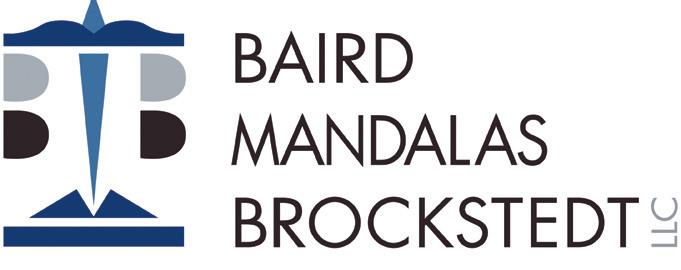

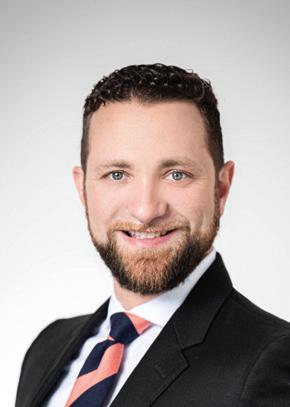
As Frederic Coudert once said, “may you live in interesting times.” I feel like every time I write an article and reflect on where we have been and where we are headed, that statement becomes even more true. As I am writing this, it is Sept. 21, 2022, and the Fed has just raised rates by 75 basis points for a third consecutive time. Treasury rates are at their highest level since 2010, and rates have more than doubled since the beginning of the year.
There is a real estate correction going on, but one thing is certain, America will always need affordable housing. So, we will be here to guide customers to the best possible equity and financing sources and help buyers and sellers make deals more efficiently while ensuring no one is taken advantage of, especially the families that built this industry.

Sadly, the public is going to be told “big bad land lords” are the ones making housing more expensive, when the truth is over-regulation and discrimination against our asset class has stymied the building of literally thousands of projects. Despite these head winds, Yale will endeavor to see our industry expand
and build more stock, as well as continue to invest in and revitalize the original product from the 1950s, 60s and 70s. You are part of a great industry with very little government support, and you provide the best affordable housing in the U.S. Be proud of what we do you as an industry, do it with excellence, do it with integrity. You must keep up with market rents or you will see more communities get redeveloped, but consider the resident and be thoughtful about rents on existing tenants versus the market rate you know you can charge a new resident. MHV James Cook is the national director of brokerage for Yale Realty and Capital Advisors. He entered the manufactured housing and RV property asset class in 2005 as a licensed agent listing homes for a local investor. In 2012, he founded the fully integrated finance and brokerage shop and has accumulated transaction exceeding $1 billion in value. He offers perspective at a national level, providing insight into the niche industry.



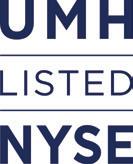




As a publicly traded REIT (NYSE:UMH), we have been providing quality a ordable housing since 1968. Our portfolio provides high pro t margins, recession resistant qualities, reliable income streams and the potential for long-term value appreciation.



• $1.8 billion in total enterprise value
• 132 communities, 25,000 homesites, 1 joint venture community containing 200 homesites, 11 states
• Housing approximately 21,000 families
• 7,300 total acres, 3,600 acres in Marcellus and Utica Shale regions
ir@umh.com
UMH Awarded 2021 Manufactured Home Community Operator of the Year and 2021 Retail Sales Center of the Year by the Manufactured Housing Institute For more information, visit www.umh.reit or contactA“A people without knowledge of their past history, origin, and culture is like a tree without roots.” - Marcus Garvey, trade and labor leader, activist, author
While the origins of manufactured housing predate 1991, this is the year author Allan Wallis published “Wheel Estates”, the widely-acclaimed history of the industry up to that point. The only other like histories are found in “Swan Song”, my 2017 publication, and Bob Vahsholtz’ “Dueling Curves: The Battle for Housing”, published in 2014. In the first instance, the history of land-lease communities from the 1970s to present day, and official record of new manufactured housing ship ments from 1955 to present day. In the latter instance, author Vahsholtz well-summarizes the history of all forms of factory-built housing. All three books can be found in the library stacks at the RV/MH Heritage Foundation in Elkhart, Ind.

Harkening back a few years, the Allen Report began its 30-year run in 1989, seeded by a list of 25 known portfolio owners/operators of “mobile home parks” provided by Craig White, the first accredited commu nity manager. That list grew to about 500 such firms by the turn of the century.
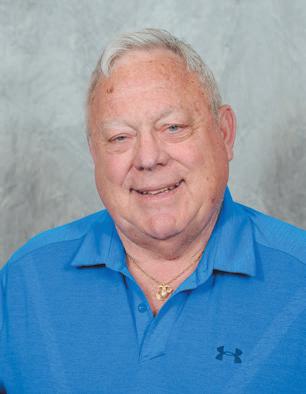
A series of print communique to join the industry was Manufactured Home Merchandiser and The Journal, and the Allen Letter in 1991. All three of these trade press publications have been succeed ed by MHInsider magazine. It was also in 1991 the Manufactured Housing Educational Institute, of the Manufactured Housing Institute, launched the previously referenced ACM program.
It bears mentioning, the publishing of property management and land development texts, relative to manufactured home communities began in 1988 with the self-publishing of “Mobile Home Park Management”, going through eight editions with today’s title “Community Management in the Manufactured Housing Industry”.
Within the next ten years, two more now out-ofprint tomes, “Development, Marketing & Operation of Manufactured Home Communities” and “How to Find, Buy, Manage & Sell a Manufactured Home Community”, both published by J. Wiley & Sons.
Not only were owners/operators of land-lease communities getting to know who their colleagues and competitors via the Allen Report and trade press, but two new national events occurred almost simultaneously in 1992. Now-retired Gub Mix started the Manufactured Housing Congress in Reno, then Las Vegas, and, the Networking Roundtable for community owners/operators launched in Clear water, Fla. Today MHI plans and hosts the Congress and Expo, but the Networking Roundtable ceased with its final meeting in Nashville during August of 2021. However, ‘round about 2011, David Roden and Spencer Roane, in an effort to better serve the educational and networking needs of community owners/operators in the southeast, started their SECO conference (originally: southeast community owners). This event has grown continually, and at
its 2022 gathering at Stone Mountain, Ga., attracted more than 500 community players, and featured more than a dozen new HUD-Code homes of varying sizes and configurations.
While land lease community consolidation had been ongoing since the syndications of the 1970s, it wasn’t until mid-1993 that 19 portfolio owners/ operators of communities convened in Indianapolis, Ind., to lay the groundwork for the eventual founding in 1996 of MHI’s National Communities Council.
What precipitated this historic meeting?
Several convening firms would be, in 1994, going pubic as real estate investment trusts, knowing they’d need effective national representation and advocacy relative to federal legislation and regulation. It also was at this time that the newly codified land-lease community standards were formed, and became instrumental to explaining the unique income-pro ducing property type to Wall Street analysts.
Two of the early accomplishments of MHI’s NCC included the introduction of resident relations in these communities. The driving force, at the time, was now retired Martin Newby of Newby Management in Flor ida. Fortunately, that emphasis continues to this day. And, while there was strong interest in replacing the defunct Woodall mobile home park grading system of the 1970s, an early effort by the late Tom Horner, Jr., of Horner & Associates, and an ABC classification system for communities by Susan McCarty in 1998, industry political pressure prevailed, and neither system went anywhere, though the latter’s formulaic worksheet continues to be widely circulated.
Today the NCC continues to meet during MHI gatherings, and sponsors a leadership conference every fall. »
Professional property management has, to date, not had the sway it enjoys among other multifamily and commercial property types. There’s rarely more than 100 Certified Property Manager members of IREM claiming an affinity for land-lease community management. The aforementioned ACM program boasts but a few hundred fully-minted designees, and most training occurs online today. While the shorter and less expensive Manufactured Housing Manger program, in place since 2001, has certified a thousand MHMs, it is no longer offered publicly.
Bottom line, professional property management continues to limp along even in one of the hottest investment property types.
A manufactured housing industry phenomenon as early as the 1970s that was “reborn” in the early 2000s is resident-owned communities, or ROCs. Originally, it was pretty much a Florida and New Hampshire experience; the firm ROC USA started its nationwide drive in the early 2000s to convert privately-owned communities. Today, that effort and what occurred earlier, numbers several hun
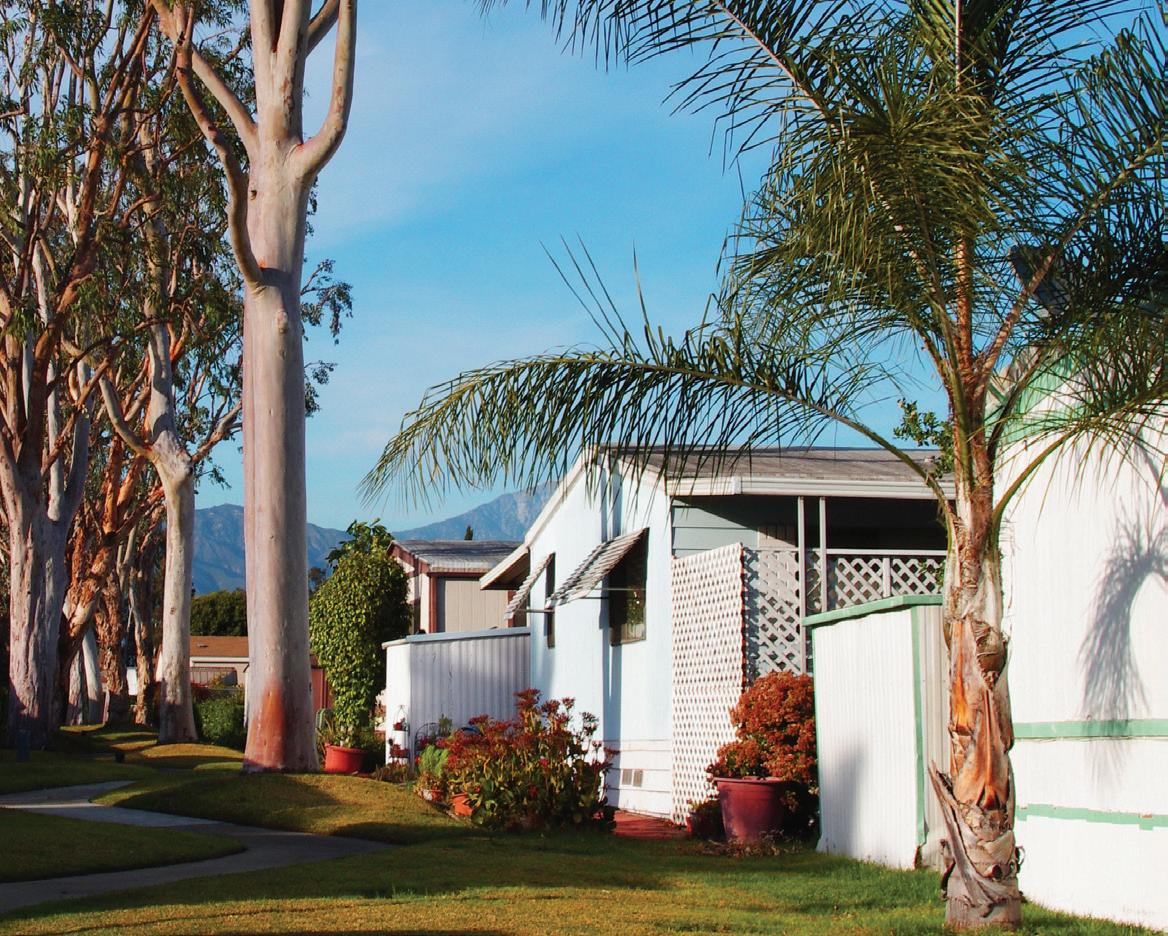

dred such properties, usually “cooperatives”, in organization and management.
Between years 2009 and 2012, at least four unrelated but timely, even historic, matters occurred. In early 2009, more than a hundred community owners/ operators and HUD-Code housing manufacturers convened at the RV/MH Hall of Fame to brainstorm how to produce more new homes! There they de cided on a new design of home, one specifically for in-community placement, a single section or modest-sized multisection with a front-loaded porch, durable features and more. Later in 2009, industry consultant Don Westphal coined the term Commu nity Series Home, or CSH, for the product. Also that year, industry installation consultant George Porter, with financial assistance from most segments of the industry, formalized the frost-free foundation protocol for manufactured homes. The irony here is, while the concept and results were widely praised, even by HUD for a while, the methodology was allowed to “die on the vine” in favor of more complicated housing installation equipment systems.
Then in the year 2011, veteran industry consultant William Carr of Iowa gave the home sales segment of our industry its first image-enhancing, working name, independent (street) MHRetailers. Finally, for now, in 2012, the “land-lease community” moniker displaced at least three other archaic trade terms used to describe the home and property type.
And the drumbeat of history goes on.
There’s still much to tell, from the early days be tween the 1940s and 1970s (where this legacy column began), and ongoing contemporary advances and concepts relative to affordable housing, shifting of marketing HUD-Code homes from retail sales centers to on-site within land-lease communities, and after 50 years, the existence of a museum displaying mobile homes to contemporary manufactured homes. MHV
George Allen has owned and fee-managed land-lease communities since 1978. He’s a former MHI Industry Person of the Year and a member of the RV/MH Hall of Fame. He has been designated a Certified Property Manager-Emeritus and a Manufactured Housing Manag er-Master. He’s also a senior consultant and staff writer with EducateMHC. Allen can be reached at (317) 346-7156 and gfa7156@aol.com.
Tony Petosa 760-505-9001 tpetosa@wellsfargo.com
Bertino
We are excited to announce the release of our 16th annual Manufactured Home Community Financing Handbook. What started as a niche sector has quickly grown over the years into the tremendous industry we are proud to be a part of today. To learn more, please visit wellsfargo.com/mhc, where you can download the latest version of our Handbook. We look forward to connecting with many of you again very soon. © 2022 Wells Fargo Bank, N.A. Member FDIC. 7246187



















Titan XTERIOR Prime is a foundation cover built to withstand the demands of everyday life. Our reinforced panel design resists damage caused by lawn care accidents, playful children, and mother nature.
• Offers superior protection from high winds, frost heaving, and hail.
• Covered by a Limited 1-year No Hole Warranty, extended to 5 years upon registration.
• Panel colors include White, Dove, and Clay.

• An insulated panel is also available...
Titan XTERIOR Elite.




